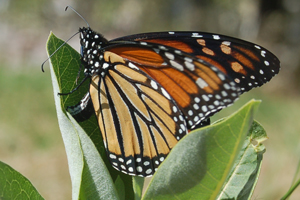The Wrack
The Wrack is the Wells Reserve blog, our collective logbook on the web.
The Wrack is the Wells Reserve blog, our collective logbook on the web.
The following was published in the Biddeford-Saco Journal Tribune Sunday edition, 9/8/13:
 For the past 34 years, my mother has thrown a family reunion on Labor Day weekend. Thirty to fifty of us arrive from all over the Northeast and Canada for four days of feasting, toasting, singing, dancing, even a “Geezers vs. Young Bucks” softball game. It’s an annual weekend devoted to celebrating, shoulder to shoulder, our lifelong ties and the continuity of our families and traditions.
For the past 34 years, my mother has thrown a family reunion on Labor Day weekend. Thirty to fifty of us arrive from all over the Northeast and Canada for four days of feasting, toasting, singing, dancing, even a “Geezers vs. Young Bucks” softball game. It’s an annual weekend devoted to celebrating, shoulder to shoulder, our lifelong ties and the continuity of our families and traditions.
Meanwhile, for those who devote themselves to the monarch butterfly, there has been no celebration yet. This month, on this side of the Rockies, monarch adults from Maine to Alberta should be flying 2,500 miles back to a few square acres within the Monarch Butterfly Biosphere Reserve, a World Heritage Site sixty miles northwest of Mexico City, where they overwinter from October to March. They should be, but they aren’t.
The monarchs’ migration, the only two-way butterfly trip in the world, is impressive: In late summer, their entire North American population heads south, fluttering along by day, roosting in trees by night. It’s an unimaginable trip through buffeting winds, pounding rains, and depleted food sources for these four-inch, fragile creatures.
What’s even more impressive is that these travelers are not the same butterflies that left Mexico last March; they are the descendants of the adults that started that journey. Monarchs only lay their eggs on milkweed. They depend on milkweed patches growing from Texas to Maine to bear their young and continue their migration. The 2nd, 3rd, and 4th generations fly north through the spring and summer. Sometime around August, a generation is hatched that turns its distinctly black-and-orange wings south again.
How do they know where to go? It’s as if my mother’s great-grandchildren could end up at her house for Labor Day, in the year 2080, without a map, without even any knowledge of the party. Biologists don’t yet understand how this trans-generational memory is possible, or even how monarchs know how to find the same few acres of Mexican forest year after year. (One navigational secret, according to recent research, likely lies in how they orient their antennae between their eyes, the circadian clocks in their brains, and the transiting sun.)
Monarchs are uniquely fascinating within the fascinating Lepidoptera order. But this year, monarchs are even more interesting… because they’re missing. The monarch population has drastically declined from its most recent peak in the late 1990s; last December’s count in Mexico estimated that the overwintering brood was 59% lower than the previous year, and a record low. At the Wells Reserve’s annual August monarch rescue event in 2012, we collected 22 caterpillars from our milkweed patch; this year, we found 2. Across the country this year the reports are all the same: where are the monarchs? A host of factors are blamed, including droughts, spring storms, deforestation, and the herbiciding of their milkweed stopovers.
On the way home from my mother’s Labor Day party, we were dutifully recorded by the E-ZPass system at the York tollbooths. If only butterfly watchers and conservationists had as easy a way to track the passage, fleeting as summer, of the monarch butterfly.
To learn more about monarch migration, and to submit sightings yourself, visit Journey North.